 |
| By Adam Zyglis |
Wednesday, May 31, 2023
The Power of Solar
35% of US Manufacturing Could Be Powered by Rooftop Solar Panels
By IOP PUBLISHING |
| Freepik.com |
Conducted by researchers from Northeastern University, the study utilizes data from the US Department of Energy Manufacturing Energy Consumption Survey to assess the potential electricity production of rooftop solar systems in comparison to the electricity demand per unit of floor space for the average manufacturing facility.
The findings reveal that, depending on the season, rooftop solar installations could fully meet the electricity needs of 5-35% of American manufacturing industries, with the furniture, textile, and apparel sectors standing to gain the most.
Not so biodegradable
Bio-based plastic and plastic-blend textiles do not biodegrade in the ocean
University of California - San Diego
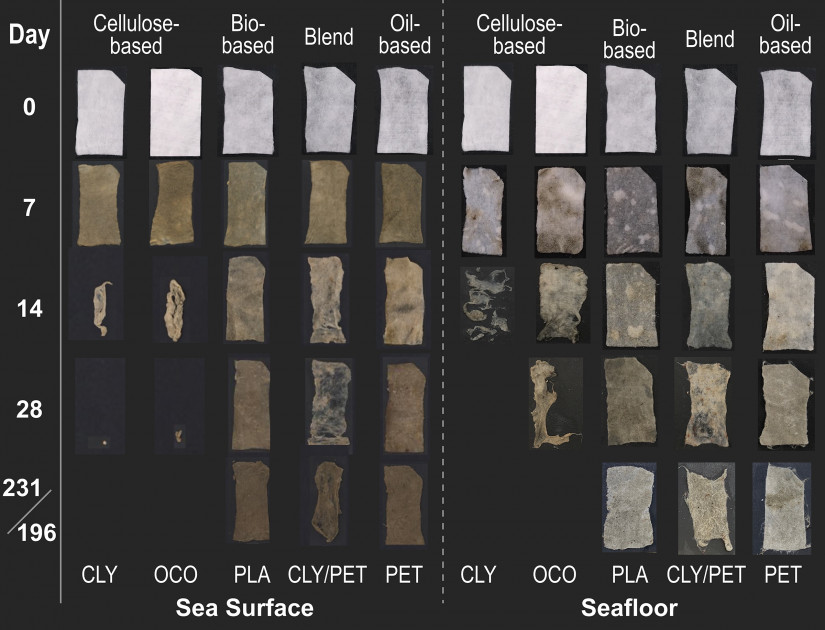 |
| Disintegration time in days for five selected types of material exposed to coastal waters at the Ellen Browning Scripps Memorial Pier in La Jolla, Calif. Study figure 1 |
Plastic pollution is seemingly omnipresent in society, and while plastic bags, cups, and bottles may first come to mind, plastics are also increasingly used to make clothing, rugs, and other textiles.
A new study from UC San Diego's Scripps Institution of Oceanography,
published May 24 in the journal PLOS One, for the first time
tracked the ability of natural, synthetic, and blended fabrics to biodegrade
directly in the ocean.
If you are on Medicare and need vascular surgery, read this
Doctors Can Reap Huge Payments as Patients Risk Life and Limb
by Annie Waldman for ProPublica
In the suburbs of Maryland, Dr. Jeffery Dormu’s presence is hard to miss. He’s a regular on the local TV station, which has featured him and his practice five times over the past five years. And he smiles down from an electronic billboard outside a three-story vascular center he calls The Watcher.
“It has a biblical reference, which is to watch over the community,” he said at its 2018 opening. In response to the country’s “tragedy of cardiovascular disease,” the center trademarked the phrase “vascular devastation,” a slogan frequently invoked in its marketing, along with a claim to have “saved over 34,000 lives and limbs.”
Dormu and his group, the Minimally Invasive Vascular Center, have been a magnet for people with leg pain who worry they have peripheral artery disease, a condition that afflicts more than 6.5 million Americans and happens when fatty deposits narrow the arteries and block blood from flowing to the legs.
But Dormu’s portrayal of his practice as a heroic refuge hid a distressing statistic: The vascular surgeon was performing an invasive leg treatment more often than almost any other doctor in the country, even when his patients didn’t need it and even as evidence of harm mounted.
One man had to have his leg amputated after Dormu administered multiple invasive treatments for mild pain, according to legal filings. A 62-year-old grandmother bled out and died shortly after Dormu cut into her, according to another lawsuit.
Dormu’s go-to procedure, the atherectomy, involved shaving blockages with blade-topped catheters. Best practices recommend that doctors hold off on invasive procedures like these, which can lead to complications including limb loss, on patients in the earliest stages of disease; doctors should first see how the patients do with exercise and medication. Dormu defaulted to atherectomies almost immediately, patient legal and medical records show.
Four years ago, leading researchers warned the Centers for Medicare and Medicaid Services that some doctors were potentially abusing interventions. The researchers implored the government insurer to scrutinize its own data to identify overuse, noting that some of the doctors could present an “immediate threat to public safety.”
There is no public evidence that CMS meaningfully responded.
Tuesday, May 30, 2023
How corporations use greenwashing to convince you they are battling climate change
Don't get tricked
Tom Lyon, University of Michigan
 |
| Consumers must do their homework before determining whether a company is actually green. Victor de Schwanberg/Science Photo Library via Getty Images |
Below are some highlights from the discussion. Answers have been edited for brevity and clarity.
The kitty that roared
Book Review: Learning to Love Your Cat’s Inner Lion
By Hope Reese
If you think your pet cat has a wild side, you’re not wrong.
Not to worry: This isn’t another cute cat book. Instead, Losos, a professor at Washington University in St. Louis whose specialty is studying a large family of tree-living lizards known as anoles, taps deeply into a wide range of feline research, from digital tracking of nighttime activity to DNA testing, to show how much we’ve learned so far about cats — and how much is still left to discover.
The earliest cats lived about 30 million years ago — the species we now call Proailurus lemanensis — but about 10 million years later, evolution “kicked into gear,” Losos writes, when felines diverged into two groups: the saber-toothed cats, which eventually became extinct, and the conical-toothed group, which evolved into today’s Felis catus.
Genetically linked to the North African wildcat Felis silvestris lybica, the first domestic cats appeared about 10,000 years ago. Most researchers believe that living near humans in early agrarian communities, where cats presumably shared food and helped control rodents — a mutually beneficial arrangement — probably led to the domestication of today’s housecats.
While there is a substantial fossil record for the saber-tooth line, the conical-toothed group is much harder to trace back. Today, there are up to 42 species of wild felines derived from the conical branch – including ocelots, bobcats, lions, and cheetahs.
For some, it seems to INDUCE dementia
By Wiley
 |
| "What this about lizard people running the government? |
Consistent internet use may halve the risk of dementia, according to a study published in the Journal of the American Geriatrics Society. The correlation remains irrespective of factors like education, race, sex, and generation.
New research published in the Journal of the American Geriatrics Society found a link between regular use of the internet and a lower risk of dementia.
For the study, investigators followed 18,154 dementia-free adults aged 50 to 64.9 years for a median of 7.9 years and a maximum of 17.1 years. During follow-up, 4.68% of participants were diagnosed with dementia.
Regular internet usage was associated with approximately half the risk of dementia compared with non-regular usage. This link was found regardless of educational attainment, race-ethnicity, sex, and generation.
Science Breakthrough for Long-Lasting Vaccines
Eternal Shield
By MONASH
UNIVERSITY
 |
| DAVIDE BONAZZI/SALZMAN ART |
In a paper published in the journal Immunity, researchers from Monash University’s Central Clinical School have made a significant discovery that could revolutionize the longevity of vaccine efficacy.
The team discovered that the key to long-lasting immunity after vaccination might lie in the generation of a unique subtype of immune cell that produces antibodies indefinitely.
The research also revealed
that there’s a maximum number of these long-lasting cells the body can maintain
at any one time, typically residing in special sites like the bone marrow.
The COVID-19 pandemic illustrates how variable vaccines can be in their length of efficacy, with regular boosters needed to keep people protected. In comparison, the immunity generated by a single vaccination against the measles virus can last decades.
It has always remained a scientific mystery as to why only some vaccines lead to life-long protection.
Now a paper published in the journal, Immunity, led by Prof. David Tarlinton and Dr. Marcus Robinson, both from Monash University’s Central Clinical School in Melbourne, Australia, has found that the clue likely lies in the body producing a unique subtype of an immune cell in response to some but not other vaccinations.
The
finding could revolutionize how all vaccines could be made to be longer
lasting.
Monday, May 29, 2023
Latest scam by rich parents to get their kid into prestigious colleges
Pay to Make Your Teen a “Peer-Reviewed” Author
By Daniel Golden, ProPublica, and Kunal Purohit
 |
| So then I got published in a medical journal. Easy peezy, |
Sophia was entering her sophomore year in prep school, but her parents were already thinking ahead to college.
They paid to enroll her in an online service called Scholar Launch, whose programs start at $3,500. Scholar Launch, which started in 2019, connects high school students with mentors who work with them on research papers that can be published and enhance their college applications.
Publication “is the objective,” Scholar Launch says on its website. “We have numerous publication partners, all are peer-reviewed journals.”
The prospect appealed to Sophia. “Nowadays, having a publication is kind of a given” for college applicants, she said. “If you don’t have one, you’re going to have to make it up in some other aspect of your application.”
Sophia said she chose marketing as her field because it “sounded interesting.” She attended weekly group sessions with a Scholar Launch mentor, a marketing executive who also taught at an Ivy League business school, before working one-on-one with a teaching assistant. Assigned to analyze a company’s marketing strategy, she selected Chick-fil-A.
Sophia’s paper offered a glowing assessment. She credited Chick-fil-A as “responsible for the popularity of the chicken sandwich,” praised its fare as healthier than fast-food burgers, saluted its “humorous yet honest” slogan (a cow saying, “Eat mor chikin”) and admired its “family-friendly” attitude and “traditional beliefs,” exemplified by closing its restaurants on Sundays.
Parkinson’s Warning
UCLA & Harvard Researchers Identify 10 Neurotoxic Pesticides
By UNIVERSITY OF CALIFORNIA - LOS ANGELES HEALTH SCIENCES
Researchers at the University of California, Los Angeles (UCLA) Health and Harvard University have identified 10 pesticides that significantly damaged neurons implicated in the development of Parkinson’s disease, providing new clues about environmental toxins’ role in the disease.
While environmental factors such as pesticide exposure
have long been linked to Parkinson’s, it has been harder to pinpoint which
pesticides may raise risk for the neurodegenerative disorder. Just in
California, the nation’s largest agricultural producer and exporter, there are
nearly 14,000 pesticide products with over 1,000 active ingredients registered
for use.
Through a novel pairing of epidemiology and toxicity
screening that leveraged California’s extensive pesticide use database, UCLA
and Harvard researchers were able to identify 10 pesticides that were directly
toxic to dopaminergic neurons. The neurons play a key role in voluntary
movement, and the death of these neurons is a hallmark of Parkinson’s.
Further, the researchers found that co-exposure of
pesticides that are typically used in combinations in cotton farming were more
toxic than any single pesticide in that group.
Chain restaurants are overcharging customers, underpaying workers, and bragging about it to investors.
If you think you’re being gouged, you’re right!
Oftentimes, when you suspect you’re being gouged by corporate price fixers, you’re right.
Take
the rat-a-tat-tat of today’s price jumps at supermarkets and chain restaurants.
They make you want to race to the cash register before they raise prices again.
No,
no cry the CEOs of food giants, it’s not us, it’s “supply chain disruptions.”
Then corporate politicians and economists chime in with old platitudes about
the invisible hand of “supply and demand” while media know-nothings pile on,
blathering about “ne’er-do-wells” causing a labor shortage.
But
that’s hogwash — your suspicions are right: It’s plain old price fixing
by avaricious food monopolies.
You shed DNA everywhere you go
It's enough to identify who you are, raising ethical questions about privacy
Jenny Whilde, University of Florida and Jessica Alice Farrell, University of Florida
 |
| A casual stroll on the beach can leave enough intact DNA behind to extract identifiable information. Comezora/Moment via Getty Images |
Every cell of the body contains DNA. Because each person has a unique genetic code, DNA can be used to identify individual people.
Typically, medical practitioners and researchers obtain human DNA through direct sampling, such as blood tests, swabs or biopsies. However, all living things, including animals, plants and microbes, constantly shed DNA. The water, soil and even the air contain microscopic particles of biological material from living organisms.
DNA that an organism has shed into the environment is known as environmental DNA, or eDNA. For the last couple of decades, scientists have been able to collect and sequence eDNA from soil or water samples to monitor biodiversity, wildlife populations and disease-causing pathogens.
Tracking rare or elusive endangered species through their eDNA has been a boon to researchers, since traditional monitoring methods such as observation or trapping can be difficult, often unsuccessful and intrusive to the species of interest.
Sunday, May 28, 2023
Small acts of kindness are frequent and universal, study finds
Around the world, research reveals, people help each other about every 2 minutes
University of California - Los Angeles
A study by researchers from UCLA, Australia, Ecuador, Germany, the Netherlands and the U.K. found that people around the world signal others for assistance every couple of minutes.
The research, which examined behaviors in
towns and rural areas in several different countries, revealed that people
comply with these small requests for help far more often than they decline
them. The findings suggest that people from all cultures have more similar
cooperative behaviors than prior research has established.
A
new study by UCLA sociologist Giovanni Rossi and an international team of
collaborators finds that people rely on each other for help constantly.
In
the study, published in Scientific
Reports, the authors -- who also included researchers at universities in
Australia, Ecuador, Germany, the Netherlands and the U.K. -- explore the human
capacity for cooperation. They found that people signal a need for assistance,
such as asking someone to pass them a utensil, once every couple of minutes.
And
the research revealed that those requests for help do not go unanswered: Across
cultures, people comply with these small requests far more often than they
decline them. On the rare occasions when people do decline, they explain why.
Elevated levels of toxic metals in some mixed-fruit juices and soft drinks
Some of these are unsafe at any level especially for young children
Tulane University
A new study has found that some commonly consumed beverages contained levels of toxic metals that exceed federal drinking water standards.
Five of the 60 beverages tested contained
levels of a toxic metal above federal drinking water standards, according to
the study from Tulane University. Two mixed juices had levels of arsenic above
the 10 microgram/liter standard. A cranberry juice, a mixed carrot and fruit
juice and an oat milk each had levels of cadmium exceeding the 3 parts per
billion standard.
The sampled beverages, which included those commonly found in grocery stores -- single and mixed fruit juices, plant-based milks, sodas, and teas -- were measured for 25 different toxic metals and trace elements.
Mixed-fruit juices and plant-based milks (such as oat and almond)
contained elevated concentrations of toxic metals more often than other drinks,
according to the findings published in the Journal of Food Composition
and Analysis.
Why Some Mass Shootings — And Their Victims — Go Uncounted
The demographics of death
By Rod McCullom
Early in the evening of Feb. 23, seven people were shot outside a grade school in northwest Philadelphia. Three men arrived on the scene in a gray Hyundai, and according to several reports, emerged from the vehicle and opened fire, striking five teenage boys, a 31-year-old woman, and her 2-year-old daughter. The injured were rushed to nearby hospitals.
By Rob Rogers
It was a brazen act in a city that has experienced higher rates of gun violence since the beginning of the pandemic. Philadelphia’s gun violence spiked in 2021, when more than an estimated 2,330 people were shot, according to data from the city’s Office of the Controller. In comparison, nearly 1,500 people were shot in Philadelphia in 2019, before the first Covid-19 cases were confirmed in the United States.
The increase in firearm violence correlates with stay-at-home orders meant to slow viral transmission, said Jessica Beard, a trauma surgeon at Temple University Hospital, which describes itself as the busiest trauma center for knife and gun violence cases in the state.
Gun violence not only spiked during the pandemic, but according to research into firearm violence and the Covid-19 pandemic, mass shootings have increased as well. And while young African American men continue to experience a disproportionate share of firearm-related injuries and fatalities, African American children now make up a larger number of the injured in several cities.
As mass shootings have become more frequent by some measures, the locations, victims, and perpetrators can challenge established media narratives about these types of shootings and the nature of gun violence, some researchers say. African American women and children are often injured in neighborhood mass shootings, for example, although these incidents do not always fit some researchers’ definitions of “mass shooting” — and news outlets don’t always report on them as such.
Even before the pandemic, the U.S. led high-income countries in firearm-related fatalities. Then, in 2021, almost 49,000 people in the U.S. died from gun-related injuries (54 percent of which were suicides) — the highest number on record, and an increase of 23 percent since 2019. The cost of this violence is staggering.
Firearm injuries cost the United States an estimated $557 billion per year, according to research by Zirui Song, an associate professor of health care policy at Harvard Medical School.
Saturday, May 27, 2023
Rebrand 'Mass Shootings' as 'Second Amendment Celebrations'
That way, we’ll know it’s really not about the victims
MICHAEL COBLENZ for Common Dreams
I don’t know about you, but I’m getting
really bummed out by all of these mass shootings. One after another, day after
day, more than one a day since the beginning of the year. Something must
change. This is America after all. The United States has a long history of
dealing with challenging problems.
There is a huge amount of Tchotchke being sold on
the internet using this theme on posters, t-shirts
and other gun nut paraphenalia
So, what’s the solution? Simple,
rebranding.
America has a long history of rebranding,
of changing the terms we use when dealing with unpleasant issues.
When slaughtering Indigenous people and
stealing their land started to sound bad, we rebranded. We called it “Manifest
Destiny” and said it was about spreading freedom from the Atlantic to the
Pacific. This made it sound noble.
When enslaving and dehumanizing the people
stolen from Africa started to get bad press, slave owners knew they had to do
something. So they rebranded. They began calling it “The Peculiar Institution.”
Peculiar, sort of like your weird Uncle
Phil, with his handlebar mustache and old MG, who affects a British accent.
Although, as peculiar as old Phil was, he never whipped anyone to death or bred
them like cattle.
After the South lost the Civil War,
Southerners knew they needed to change the terms of the debate. They knew that
if everyone thought they had simply been fighting to maintain slavery they
would lose sympathy. They knew they had to do something to preserve any vestige
of their traditions (you know, white supremacy). So they rebranded.
They starting to refer to the war as “The
Lost Cause.” This just sounds mundane, non-offensive. It made it sound not much
different than the loss of a hard-fought, though honorable, soccer match.
Bird Feeding Boosts Winter Survival of Small Birds by Helping Fight Infections
And they do appreciate it
By LUND UNIVERSITY
A Swedish study shows that providing food for small birds during winter results in healthier birds with better immune response. As birds face new pathogens due to climate change and human activity, understanding factors like winter feeding is important for their survival.
A small change in body temperature can be fatal for humans. Small birds, meanwhile, lower their body temperature at night by several degrees during the winter.
Just like us, the birds attempt to save energy when it is cold. If they are exposed to infection, the body’s first reaction is to raise its temperature, which clashes with the bird’s simultaneous need to save energy by lowering body temperature.
COVID costing the US $14 TRILLION
Why prevention is so important
Jakub Hlávka, University of Southern California and Adam Rose, University of Southern California
The economic toll of the COVID-19 pandemic in the U.S. will reach US$14 trillion by the end of 2023, our team of economists, public policy researchers and other experts have estimated.
Once guests trickled back into hotels, they were urged to
socially distance. Spencer Platt/Getty Images
Putting a price tag on all the pain, suffering and upheaval Americans and people around the world have experienced because of COVID-19 is, of course, hard to do.
More than 1.1 million people have died as a result of COVID-19 in the U.S., and many more have been hospitalized or lost loved ones. Based on data from the first 30 months of the pandemic, we forecast the scale of total economic losses over a four-year period, from January 2020 to December 2023.
To come up with our estimates, our team used economic modeling to approximate the revenue lost due to mandatory business closures at the beginning of the pandemic. We also used modeling to assess the economic blows from the many changes in personal behavior that continued long after the lockdown orders were lifted – such as avoiding restaurants, theaters and other crowded places.
Workplace absences, and sales lost due to the cessation of brick-and-mortar retail shopping, air travel and public gatherings, contributed the most. At the height of the pandemic, in the second quarter of 2020, our survey indicates that international and domestic airline travel fell by nearly 60%, indoor dining by 65% and in-store shopping by 43%.
We found that the three sectors that lost the most ground during the first 30 months of the pandemic were air travel, dining, and health and social services, which contracted by 57.5%, 26.5% and 29.16%, respectively.
These losses were offset to a degree by surges in online purchases, a series of large fiscal stimulus and economic relief packages and an unprecedented expansion of the number of Americans working from home – and thus were able to keep doing jobs that might otherwise have been cut.
Heading to a beach this summer?
Here’s how to keep harmful algae blooms from spoiling your trip
Brad Reisfeld, Colorado State University
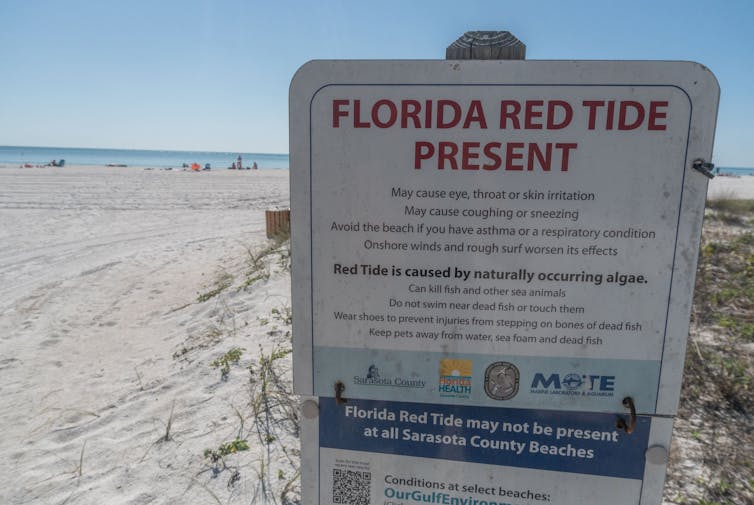 |
| Warning sign at Lido Key Beach in Sarasota, Fla., March 15, 2023, during a toxic algae bloom. Jesus Olarte/AFP via Getty Images |
As a toxicologist, I study health risks from both synthetic and natural substances. I’ve conducted research into early detection of harmful algal blooms, or HABs, which are an increasing threat to humans, animals and the environment.
Toxins produced during these blooms have been implicated in human and animal illnesses in at least 43 states. Scientists have estimated that in the U.S. alone, freshwater HABs cause more than US$4.6 billion in damage yearly. Here’s what to know about them if you’re bound for the water’s edge this summer.
Friday, May 26, 2023
White power movements in US history have often relied on veterans
They are the storm troopers for racist organizations
Kathleen Belew, Northwestern University
 |
| A member of the Ku Klux Klan shouts at counterprotesters during a July 2017 rally in Charlottesville, Va., calling for the protection of Southern Confederate monuments. Andrew Caballero-Reynolds/AFP via Getty Images |
In March 2023, Belew spoke at the Imagine Solutions Conference in Naples, Florida, about how the narrative of the “lone wolf” actor distracts from the broader threat of the white power movement in America. The Conversation asked Belew about her work. Her edited answers are below.
Trustom Pond Refuge to close in June and August for upgrades
Each closure will run eleven days
Visitor Services Manager Janis Nepshinsky, Rhode Island National Wildlife Refuge
The U.S. Fish and Wildlife Service is planning to rehabilitate the recreational trails and entrance ramp
at Trustom Pond National Wildlife Refuge from June 5 through June 16, and again
from August 7 through August 18, 2023. 
Photo by Will Collette
Otter Point Trail will be improved
to increase accessibility for all visitors, some observation platforms will be
renovated or replaced, the trail entrance near the contact station will be
renovated, and the lower farm platform will be removed for safety
concerns.
During the first phase of construction, beginning June 5 through June 16, the contact station and all refuge trails will be temporarily closed and unavailable to the public for safety reasons and to allow space for construction vehicles.
During phase two of the project, beginning August 7 through August 18, the Otter Point Trail will be temporarily closed to the public during the rehabilitation project, however, Osprey Point Trail will remain open.
For additional information, call my cell at 401.318.0049 if you have any questions.
Prominent Tribal Elder declares candidacy for Congressional District 1 seat
Bella Noka says she will focus on seniors, healthcare and housing
By Will Collette
 |
| With her husband Randy. Photo by Steve Ahlquist |
Well-known Narragansett tribal leader Bella Noka joins an already jam-packed field of Democrats competing in the September 5 primary.
The winner moves on to a general election against whatever Republican gets served up as a sacrificial lamb in true blue Congressional District 1. No Republican has yet declared.
The seat is currently held by David Cicilline who has resigned to take over leadership of the Rhode Island Foundation.
Ms. Noka is well-known and admired by many (including me) but faces the same challenge of raising a ton of money and somehow breaking out of the pack.
Then there's residency. Richmond, where she lives, in not in CD-1. She's probably not the only one in the pack of nearly 20 candidates who doesn't reside in the district.
Rep. Seth Magaziner didn't live in the Second District when he declared but moved before the 2022 primary.
Roger Williams aims to boost RI shellfish
RWU aquaculture research farm aims to boost bivalve industry
By Nancy Lavin, Rhode Island Current

Oyster aquaculture research will take place in Mount Hope Bay close to shore on the Bristol campus of Roger Williams University. (Photo by Janine L. Weisman/Rhode Island Current)
When Tim Scott started teaching at Roger Williams University in the late 1990s, aquaculture was hardly a part of the vernacular, much less a moneymaker for the state.
In the intervening years, the biology professor has watched the industry explode, with whopping increases in annual wholesale sales along with spreading appreciation for the science of – and end product from – shellfish farming.
“It’s one of the fastest growing segments of our economy,” Scott said, pointing to a 2021 report that pegged the value of state aquaculture products at $7.5 million.
But the Ocean State’s bivalve boom could be bigger, especially when compared with other states, Scott said.
Which is why the university wants to launch a research and education-focused aquaculture farm adjacent to its Bristol campus. The 1.78-acre lease in Mount Hope Bay would serve as a breeding ground for experimenting with equipment and species that in turn, could help Rhode Island shellfish farmers grow their own businesses.
PFAS Are Costing Society Over $17 Trillion Per Year Worldwide
Surprisingly, they return low profit margins for manufacturers
By TOD HARDIN
The societal cost of PFAS – also known as “forever chemicals” – exceeds $17 trillion across the global economy, according to a forthcoming report from Sweden-based NGO, ChemSec.
The findings also indicate that PFAS
chemicals provide extremely low ROI for their manufacturers, at just $4 billion
of profit annually – which might sound grand on the surface, but is paltry when
you consider that there are 12 manufacturers that account for most of the PFAS
produced worldwide.
“If you compare the profits that they make
and the cost to society – it’s ridiculous,” said Peter Pierrou, ChemSec’s
communications director, in an interview with The
Guardian.
PFAS – which stands for per- and polyfluoroalkyl substances – are a group of about 15,000 chemicals used in products that are used in the manufacture of endless products, many of which provide convenience and safety.
These include such things as firefighting foam,
medical devices, stain-resistant carpeting, waterproof clothing, non-stick
cookware, and the production of semiconductor chips that power technology.
Unfortunately, many of these “forever
chemicals” are linked to a number of health issues, including increased
incidence of cancer, liver and kidney disease, reproductive issues,
immunodeficiencies, and hormonal disruptions. They are often referred to as
“forever chemicals” because they do not naturally break down.
Thursday, May 25, 2023
For democracy's sake, students must learn actual history
Children must be taught the truth about the Holocaust, slavery and injustice
Boaz Dvir, Penn State The Florida Department of Education announced on April 10, 2023, that it had rejected 35% of the social studies books publishers submitted for approval and use in the state’s public schools.The decision garnered a great deal of media attention. But it was just the latest in a series of efforts around the country to limit students’ access to books, lessons and courses about certain historical and societal topics, often dealing with race.
At least 36 states have halted or are seeking the legal means to stop teachers from examining racism in their classrooms.
School districts around the country have banned books about issues ranging from racism to the Holocaust to the LGBTQ community. Parent groups have campaigned to restrict the instruction of such difficult topics as slavery.
Moms for Liberty, and other groups and individuals opposing the instruction of some of these topics, say they’re protecting children from divisive, identity-shaming, indoctrinating and pornographic material.
In my view, some segments of American society are turning their backs on history.
That comes at a cost. I’ve seen it firsthand. I direct Penn State programs – the Holocaust, Genocide and Human Rights Education Initiative and the Hammel Family Human Rights Initiative – that give my colleagues and me a real-time glimpse into the vulnerable state of K-12 instruction about difficult topics.
Many educators have been shying away from sensitive issues. The 2022 American Instructional Resources Survey, a survey about teachers’ views on what they can teach, by Rand Education and Labor, which focuses on school and education issues, shows the new and proposed state laws restricting the instruction of difficult topics made a quarter of the country’s 4 million teachers hesitant or downright scared to teach those subjects. This was true even when the educators taught in a state that had not at the time proposed or enacted such a law.
As a result, research shows, students may be deprived of vital lessons such as the global persistence of crimes against humanity and the the factors that give rise to genocides.
As a documentary filmmaker and assistant professor of journalism, I often discuss difficult topics with students. After a rough-cut university screening of my forthcoming documentary “Cojot,” which tells the story of Holocaust survivor Michel Cojot’s 1970s quest to kill his father’s Nazi executioner, two college students approached me apologetically, saying, “We’ve never heard of this.”
Right-Wing US Supreme Court Delivers 'Catastrophic Loss for Water Protections'
"Ripped the heart out of the law we depend on to protect American waters and wetlands"
JESSICA CORBETT for Common Dreams
The U.S. Supreme Court's right-wing majority on Thursday severely curtailed protections for "waters of the United States."
The decision in Sackett
v. Environmental Protection Agency (EPA) is "unanimous in result
but very split in reasoning," explained Slate's Mark Joseph Stern.
"The upshot of Sackett is that, by a 5–4 vote, the
Supreme Court dramatically narrows" which wetlands are covered by the
Clean Water Act (CWA).
The majority opinion—authored by Justice
Samuel Alito and joined by all of the court's other right-wing members except
Justice Brett Kavanaugh—concludes that the CWA only applies to wetlands with
"a continuous surface connection" to larger bodies of water,
excluding those that are "adjacent."
Earthjustice
declared in
response to the ruling that "this is a catastrophic loss for water
protections across the country and a win for big polluters, putting our
communities, public health, and local ecosystems in danger."
70% of Type 2 Diabetes Cases Linked to Food Choices
Correlation between a poor diet and 14 million cases of type 2 diabetes worldwide
By TUFTS UNIVERSITY
The study, published on April 17 in Nature Medicine,
offers valuable insights into the dietary factors responsible for the burden of
type 2 diabetes by region, based on an analysis of data from 1990 to 2018.
Of the 11 dietary factors considered, three had an outsized contribution to the rising global incidence of type 2 diabetes: Insufficient intake of whole grains, excesses of refined rice and wheat, and the overconsumption of processed meat. Factors such as drinking too much fruit juice and not eating enough non-starchy vegetables, nuts, or seeds, had less of an impact on new cases of the disease.
Electric vehicle transition will cut $217 million in state revenues, much of it in gas taxes
The more important question is whether it is worth it
By Nancy Lavin, Rhode Island Current
The road to electric vehicles is paved with price tags: to build charging stations, offer rebates, not to mention a precipitous decline in the state’s gas tax.
All together, the tax revenue losses and new expenditures associated with a transition to electric vehicles could slash $216.9 million that would otherwise flow into state coffers by 2035, according to analysis shared by a group of Syracuse University master’s degree students.
The presentation to lawmakers and transportation officials at the State House on Tuesday comes a week after Gov. Dan McKee unveiled his plan to adopt California’s emissions standards, phasing out the import of new, gas-powered cars and trucks to the state by 2035.
McKee’s announcement, now subject to a public vetting process led by the Rhode Island Department of Environmental Management, was met with swift backlash by Republican lawmakers, who decried the regulations in a statement and over social media.
EDITOR'S NOTE: Every life-saving public policy change has some costs attached, whether it's curbing cigarettes, banning cancer-causing chemicals, taking lead out of gasoline, requiring seatbelts or recalling contaminated food. So would a ban on weapons of war for domestic use. Bean-counters such as this Syracuse crew, do not include the health and environmental benefits into their analysis, thus creating a biased if not totally false narrative. - Will Collette




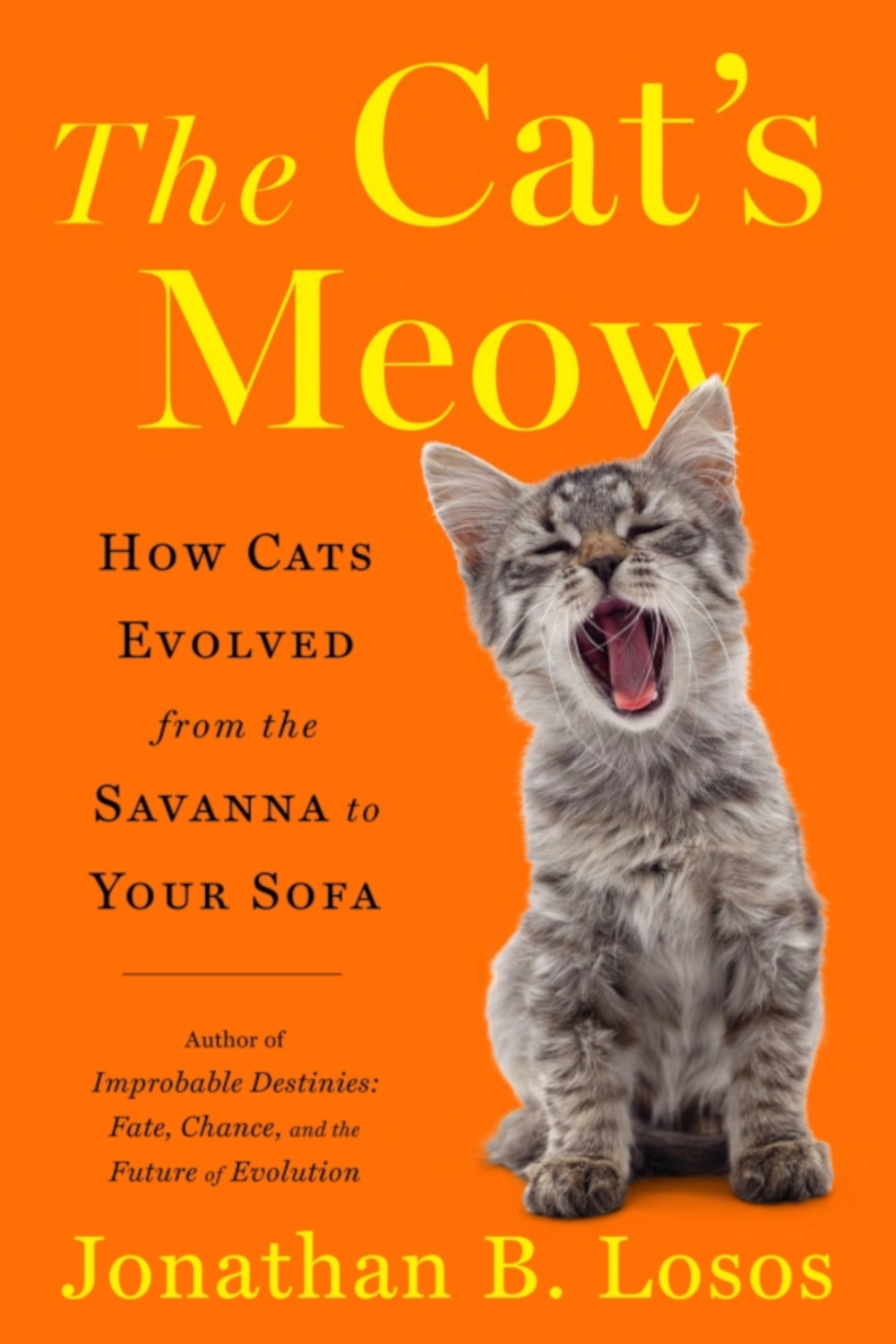


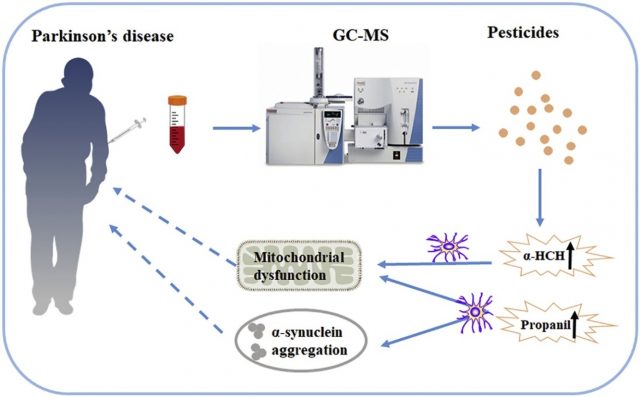









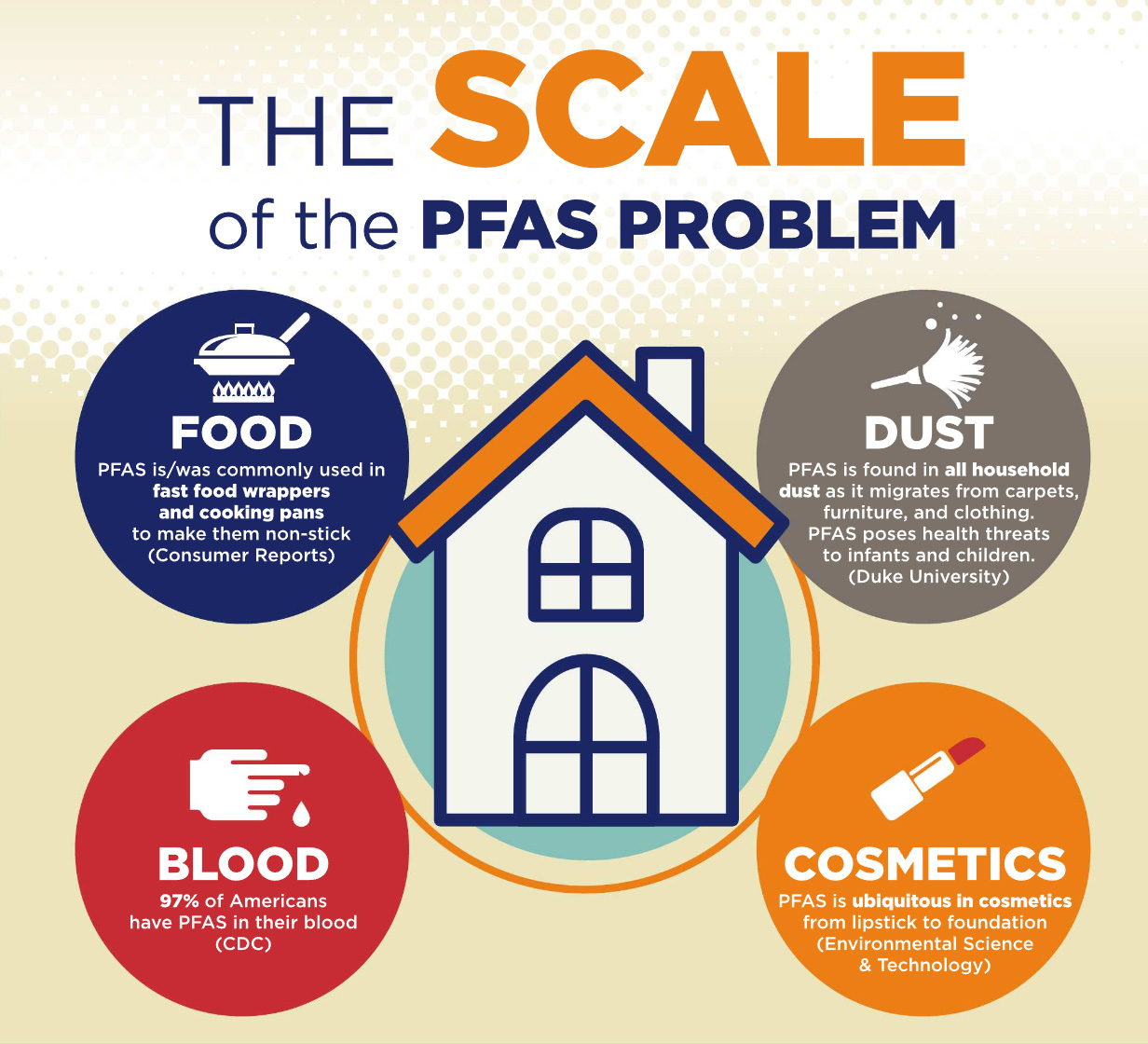




.webp)
